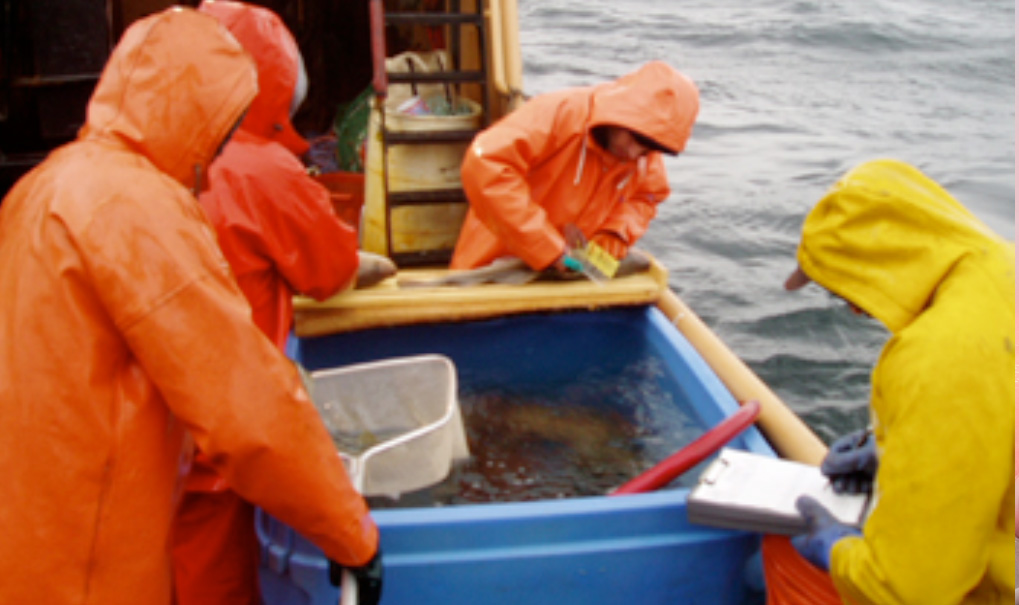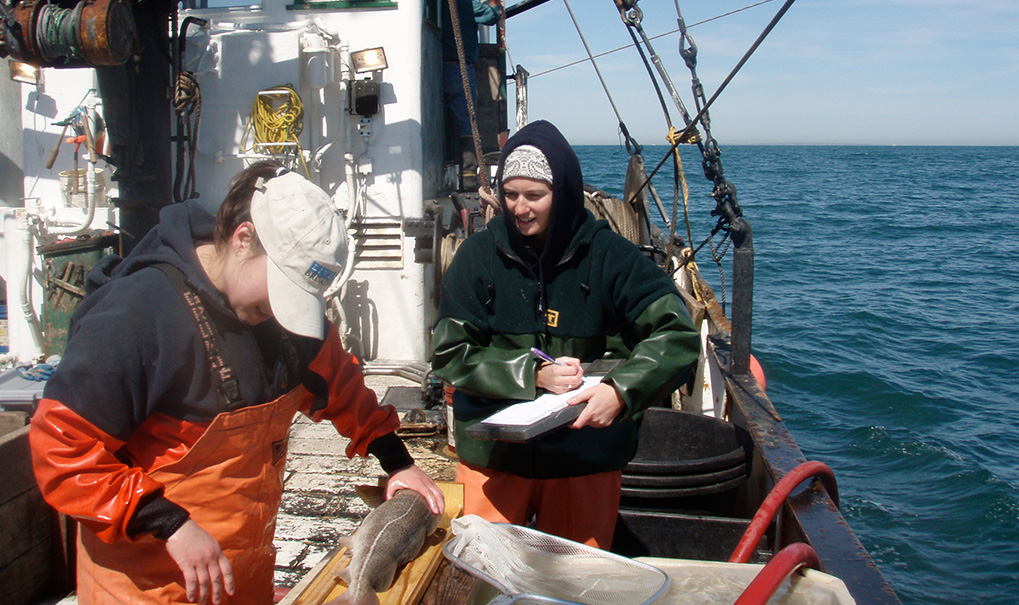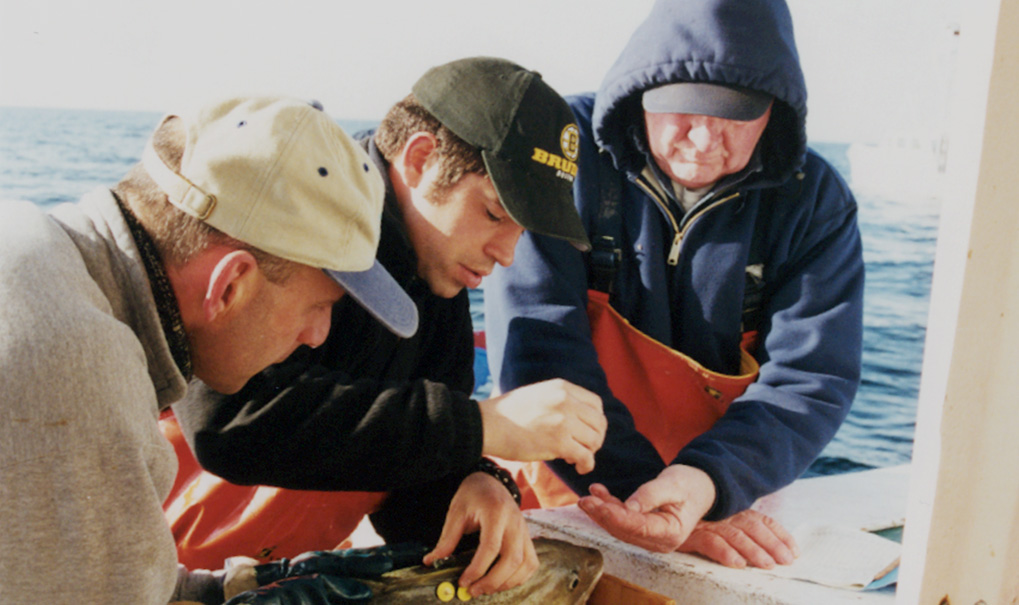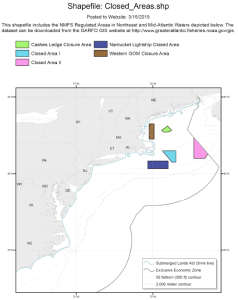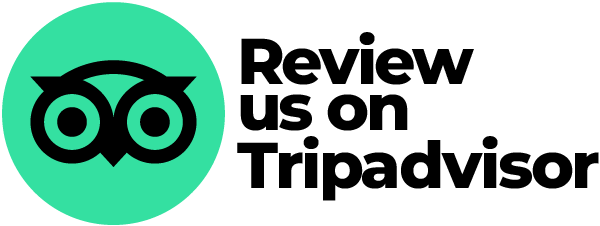SUSTAINING THE RESOURCE
Fishermen depend on a healthy resource for their livelihood. Many fishermen work with scientists in what is known as cooperative research. Cooperative research values the fishermen’s skills and knowledge equally with those of the scientists. Working together, they are able to monitor stocks and develop new gear and fishing methods to sustain the resource.
The United States fisheries are the most highly regulated and sustainably harvested in the world.
- Off-shore fishing is regulated by the federal government.
- Effort is limited through a variety of restrictions:
- Quotas limit the amount of each species that can be harvested
- Trip limits
- Crew size
- Gear restrictions (mesh size, link size, etc.)
- Closed Areas
Scalloping
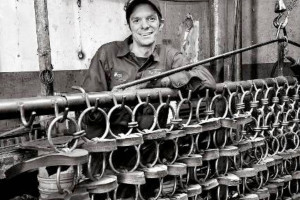
4-inch rings on the scallop dredges increase efficiency and allow small scallops and other small marine life to return to the sea floor by passing through the wide dredge rings.
Juvenile scallops smaller then 4 inches pass through the ring openings and remain on the bottom to grow and reproduce for the future health of the scallop population.
The 4-inch rings also reduce the amount of time dredges contact the bottom.
Even though scallopers catch mostly scallops, the dredge can also bring up other bottom dwelling species like monkfish, flatfish and skates. To reduce by-catch of non-target finfish, the top of the bag is made of twine with a 10 inch opening. This large opening is a conservation measure designed to allow fish to escape and help rebuild fish stocks.
Groundfishing
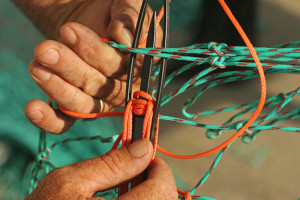
Groundfish are caught along the bottom portion of the ocean, using nets which are custom made for each boat according to vessel size, target species, and location fished. The mesh size of the net must be at least 6 inches. The regulated mesh size for the cod end (the part of the net which holds the catch) is 6.5 inches wide in order to allow juvenile fish to escape.
There are three major areas permanently closed to fishing since 1994. They are Closed Area I just east of the Great South Channel, Closed Area II on eastern Georges Bank and the Nantucket Lightship Closed Area south of Nantucket Island and west of the Great South Channel. These areas are designed to protect spawning fish as well as juveniles and essential fish habitat to insure the health of fish populations for the future. A total of 8,300 square miles of the Gulf of Maine and Georges Bank are permanently closed to fishing year-round. Groundfish trawling is also not allowed in Buzzards Bay (state waters) to protect coastal dwelling fish.
Fishermen are Conservationists:
- Many fishermen work with scientists to insure a strong, healthy resource.
- Cooperative research values the fishermen’s skills and knowledge equally with those of the scientists.
- Working together, fishermen and scientists monitor stocks and develop new gear and fishing methods to sustain the resource.
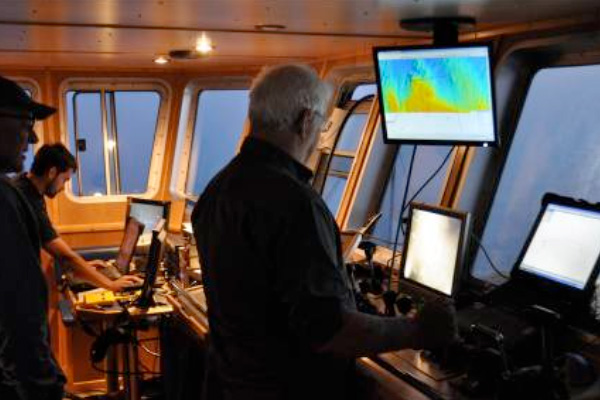
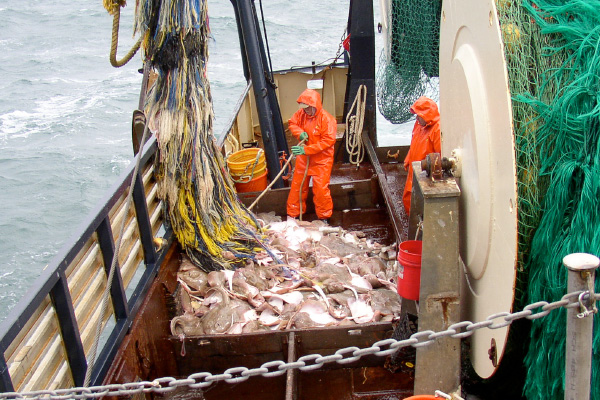
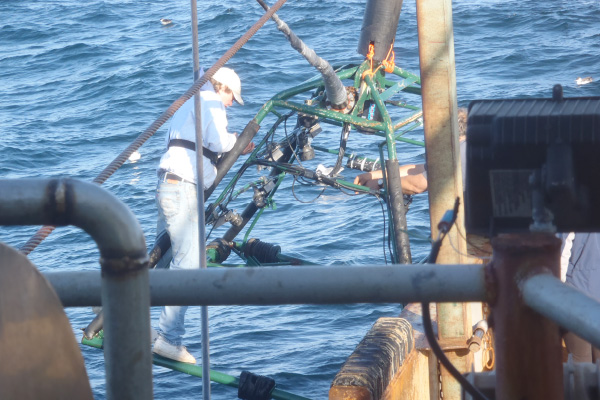
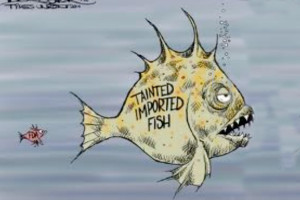 Imports vs. Domestic & Wild vs. Farmed
Imports vs. Domestic & Wild vs. Farmed
Currently the United States imports 95% of its seafood. Much of this seafood comes from countries which do not practice sustainable harvesting methods, do not have fair labor practices, and do not monitor food safety. Less than 1% of imported seafood is inspected, and of that 60% is rejected for toxins.
By choosing to eat wild harvested, domestic seafood, you can be sure you are getting a high quality, healthy source of protein and supporting good environmental and labor practices.
Additionally, try expanding your pallet to include abundant, underutilized species such as dogfish (popular as fish and chips in the UK), redfish, whiting, hake, pollock, and skate. Check the EAT tab for some delicious recipes.

